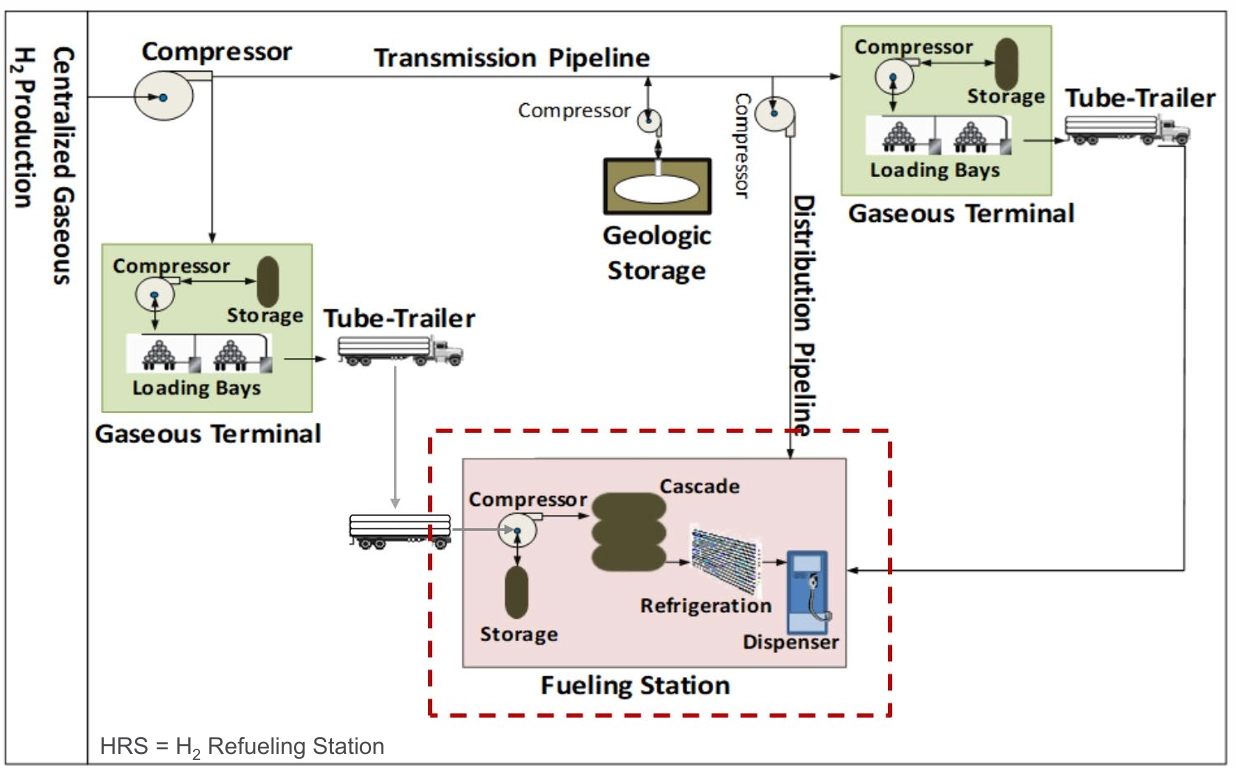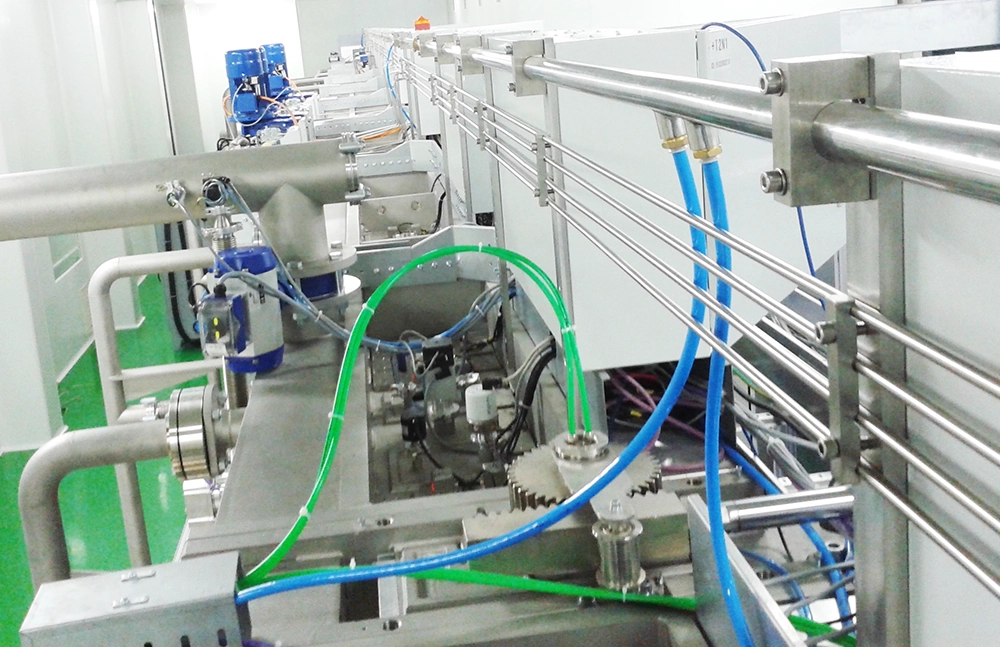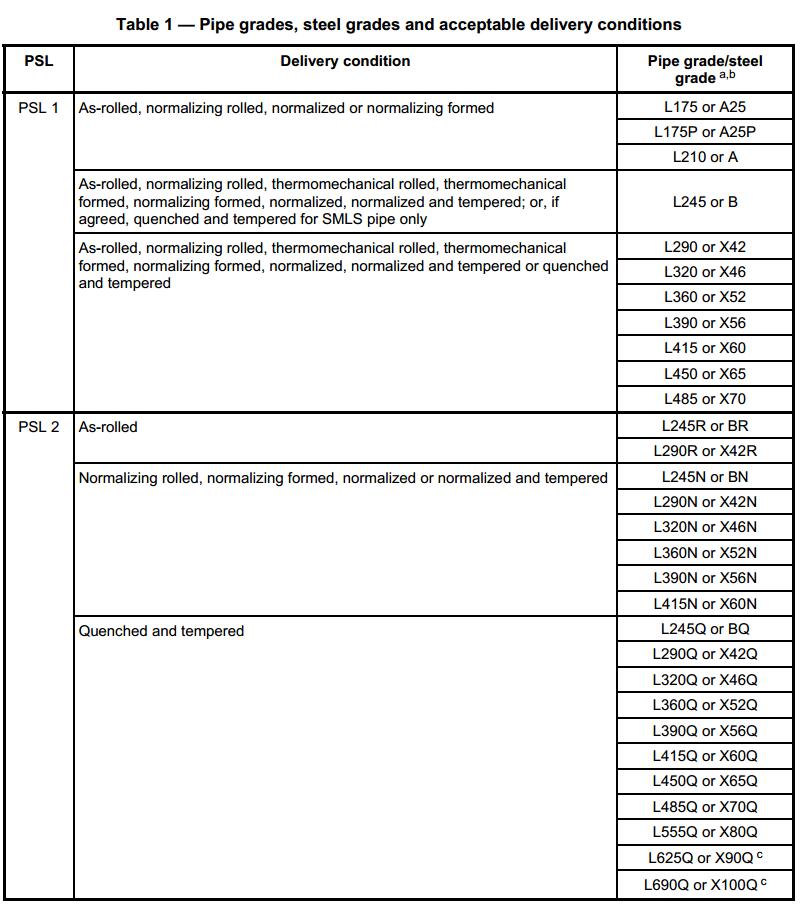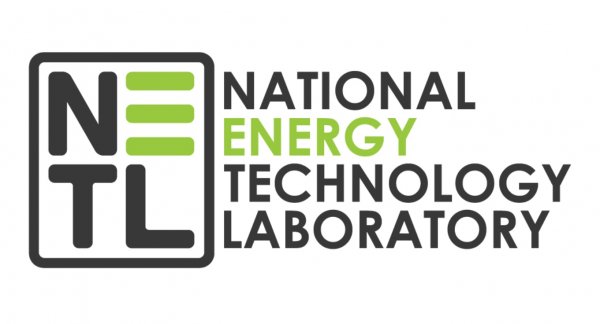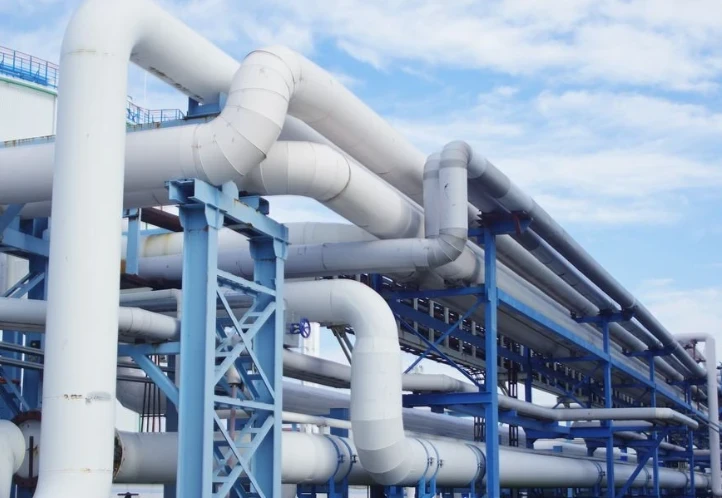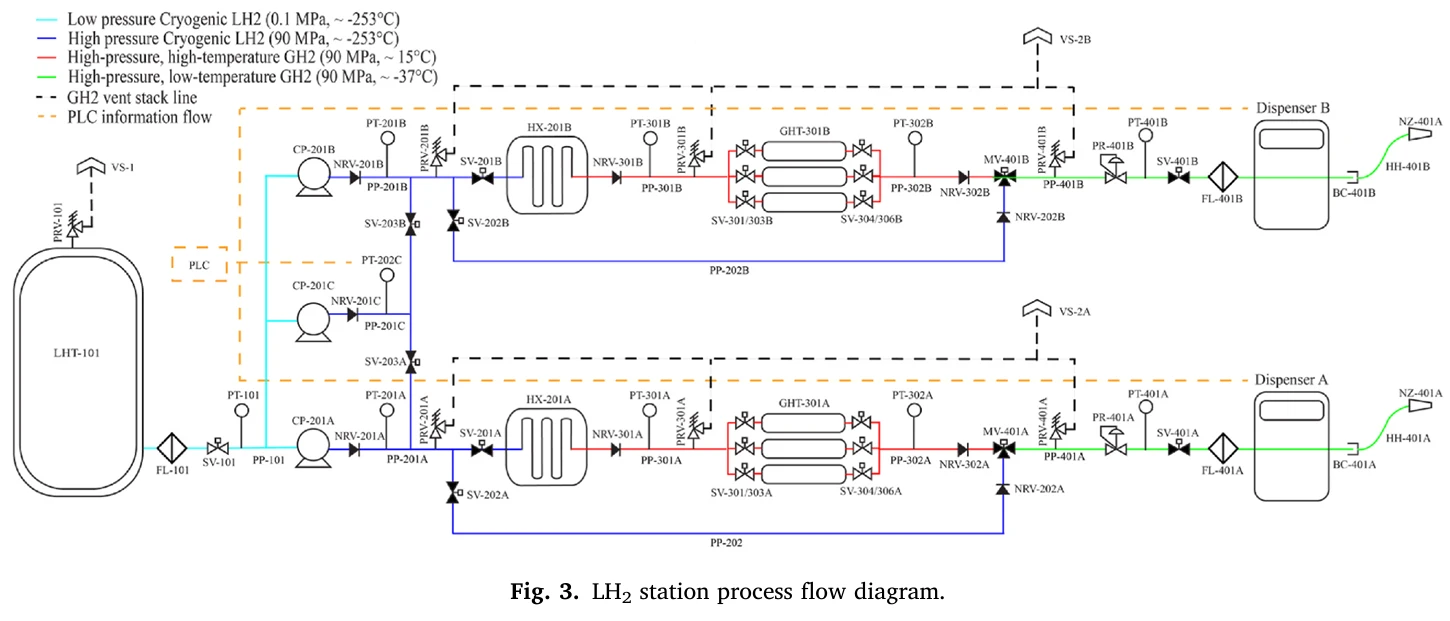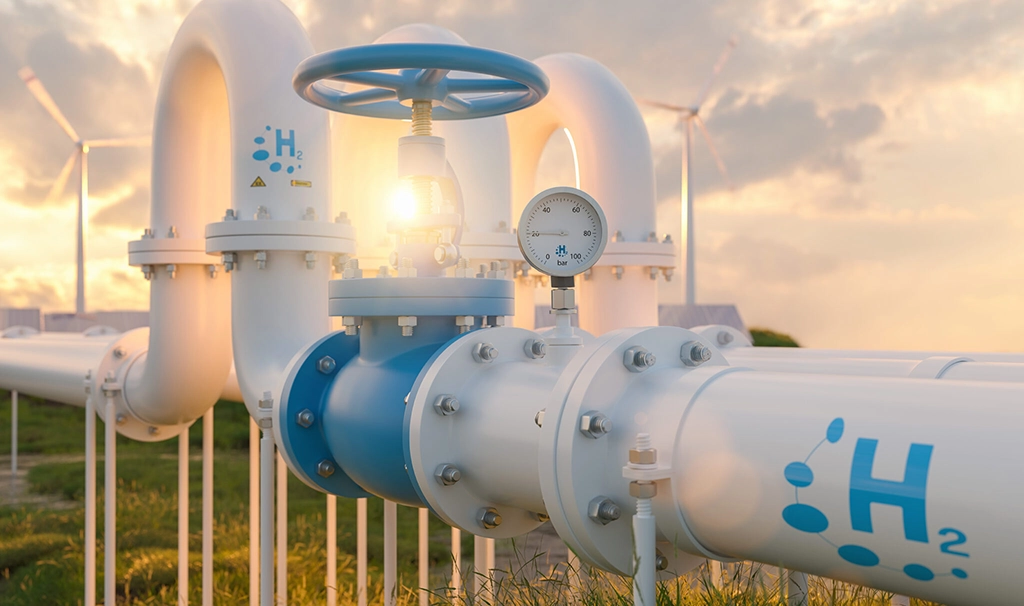Hydrogen fueling cost analysis of various onboard storage technologies
基于各种车载氢燃料储存技术的成本分析 Hydrogen fueling cost analysis of various onboard storage technologies
Author : Amgad Elgowainy ,PhD (Senior Scientist ,Distinguished Fellow, and Group Leader
Article : Systems Assessment Center/ Energy Systems and Infrastructure Analysis Division/ Argonne National Laboratory
原文链接: Argonne Research PDF Document
H2 fuel cell electric vehicles are attractive zero-emission options when daily energy use is high (vehicle cost perspective)
当常规能源消耗较高时,H2 燃料电池电动汽车是极具吸引力的零排放选择(站在车辆成本角度来分析)
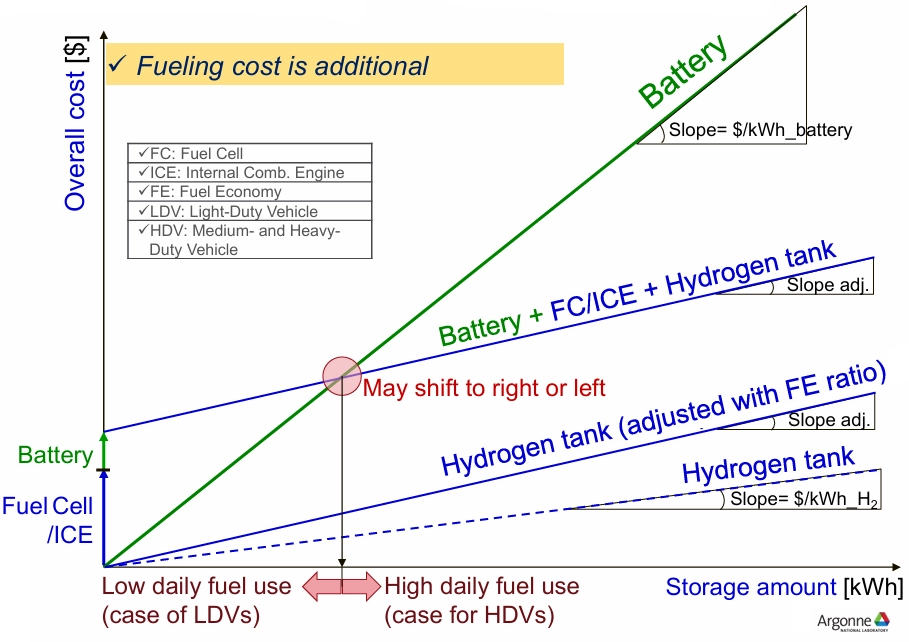
Hydrogen Delivery Scenario Analysis suite of Models (HDSAM)
Argonne’s HDSAM and its derivatives evaluate the economic performance and market acceptance of hydrogen delivery technologies and fueling infrastructure for FCEVs
Publicly available with >5,000 users, including major gas and energy companies, in more than 25 countries
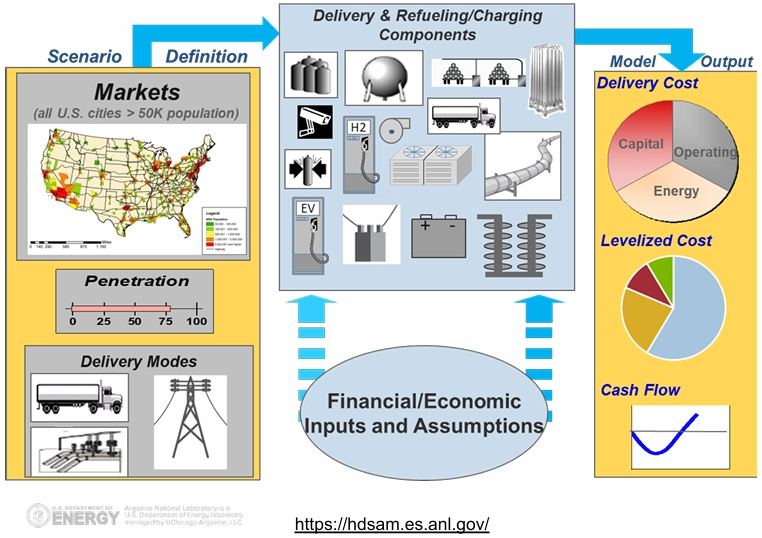
Supported by U.S. Department of Energy’s Hydrogen and Fuel Cell Technologies Office (HFTO) since 2004
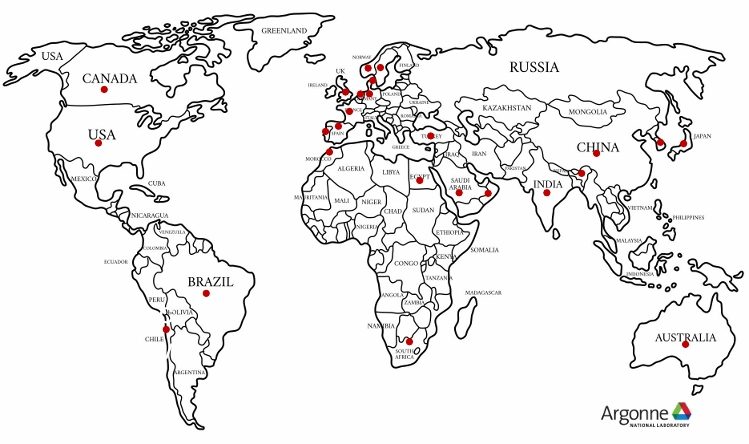
Fueling model for fuel cell HDVs is different from LDVs
Hydrogen fueling cost for HDVs is different from LDV :
Fill amount
Fill rate
Fill strategy
Fueling pressure
Precooling requirement, etc.
Requires different design strategies with respect to buffering compressor and refrigeration systems
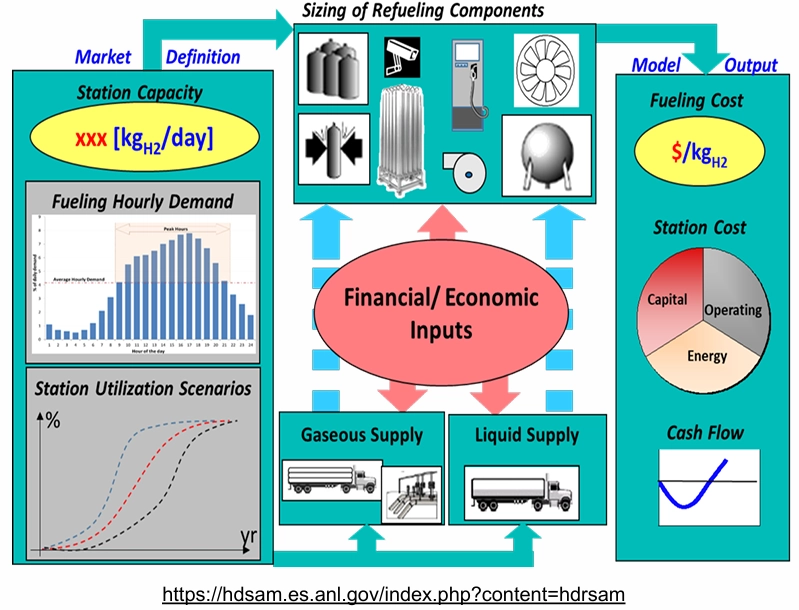
Cost of hydrogen delivery and refueling for FCEVs is strongly driven by onboard storage requirement and H2 supply chain
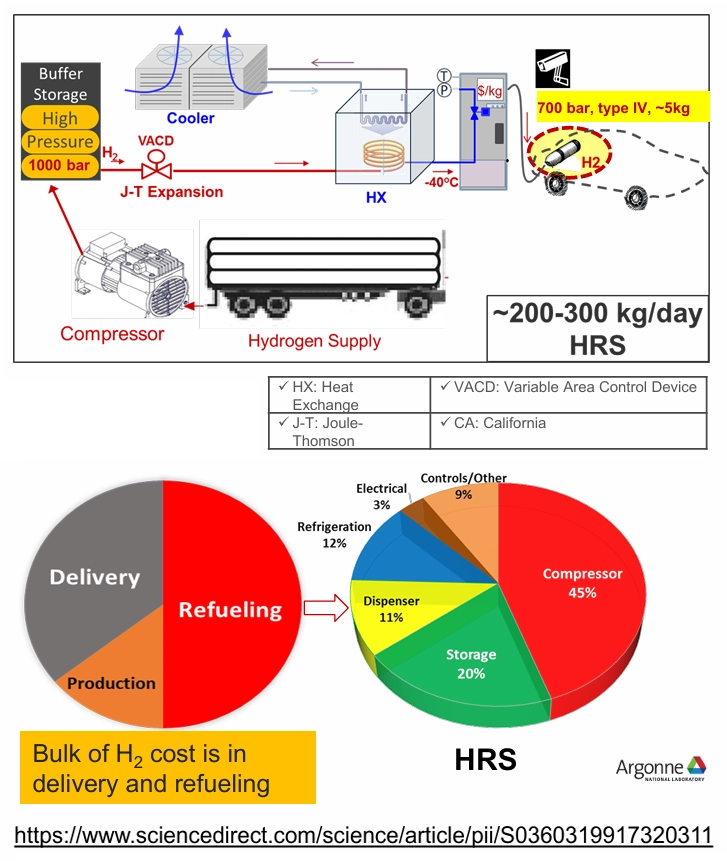
Typical refrigeration system used in HRS requires ~ 15-20kW precooling capacity per each 1 kg/min dispensing
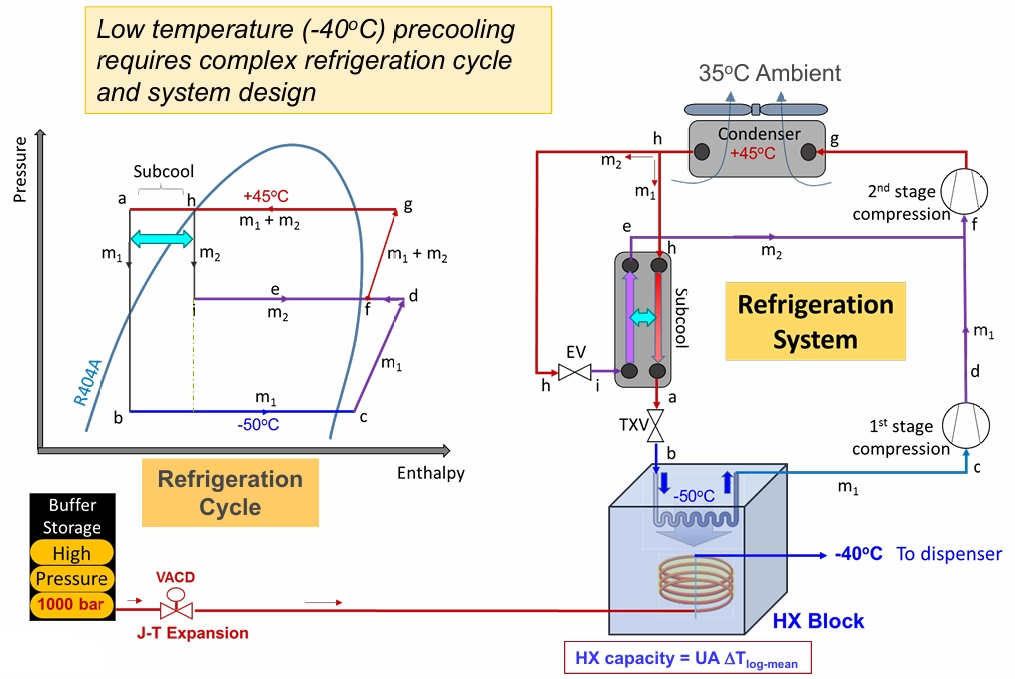
Liquid hydrogen (LH2) delivery simplifies station design
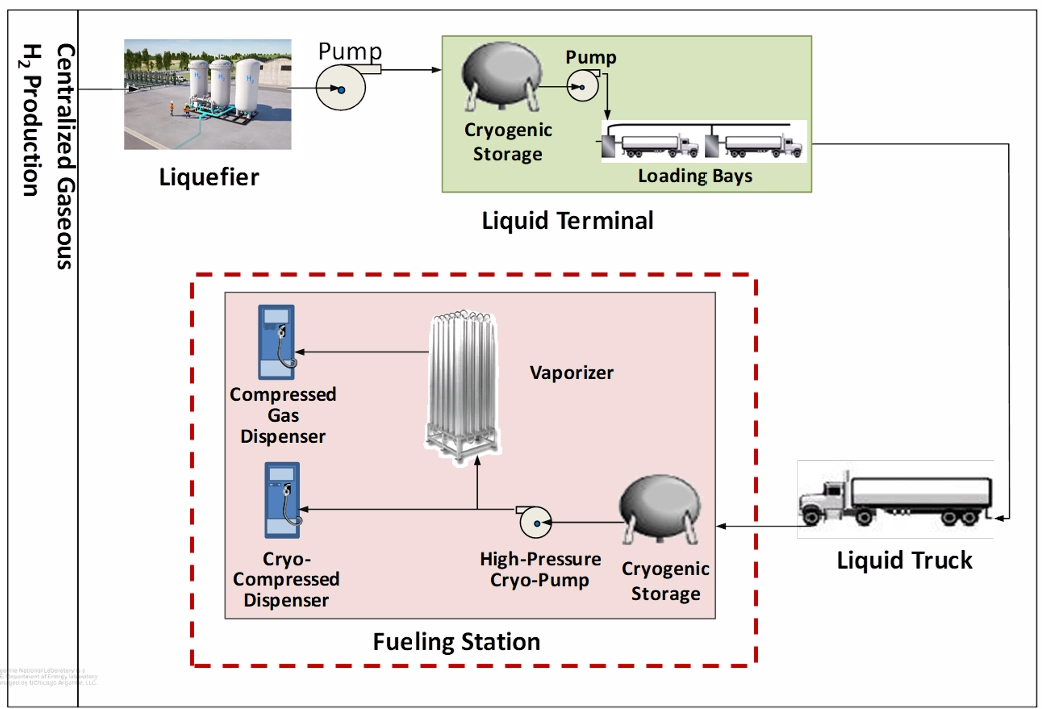
Versatile refueling configurations with LH2 delivery: simplifies HRS configuration
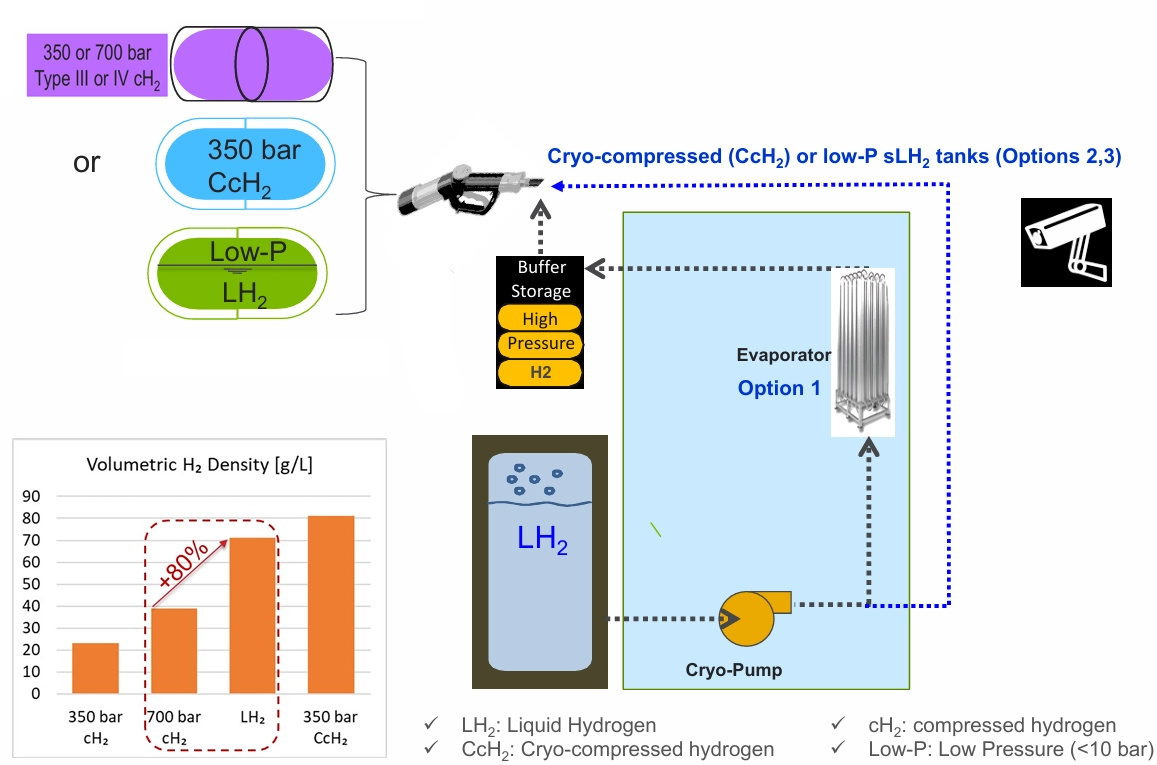
Refrigeration unit can be avoided with proper thermal energy recovery
Liquid H2supplied stations can handle faster fills with lower cost compared to gaseous H2supply
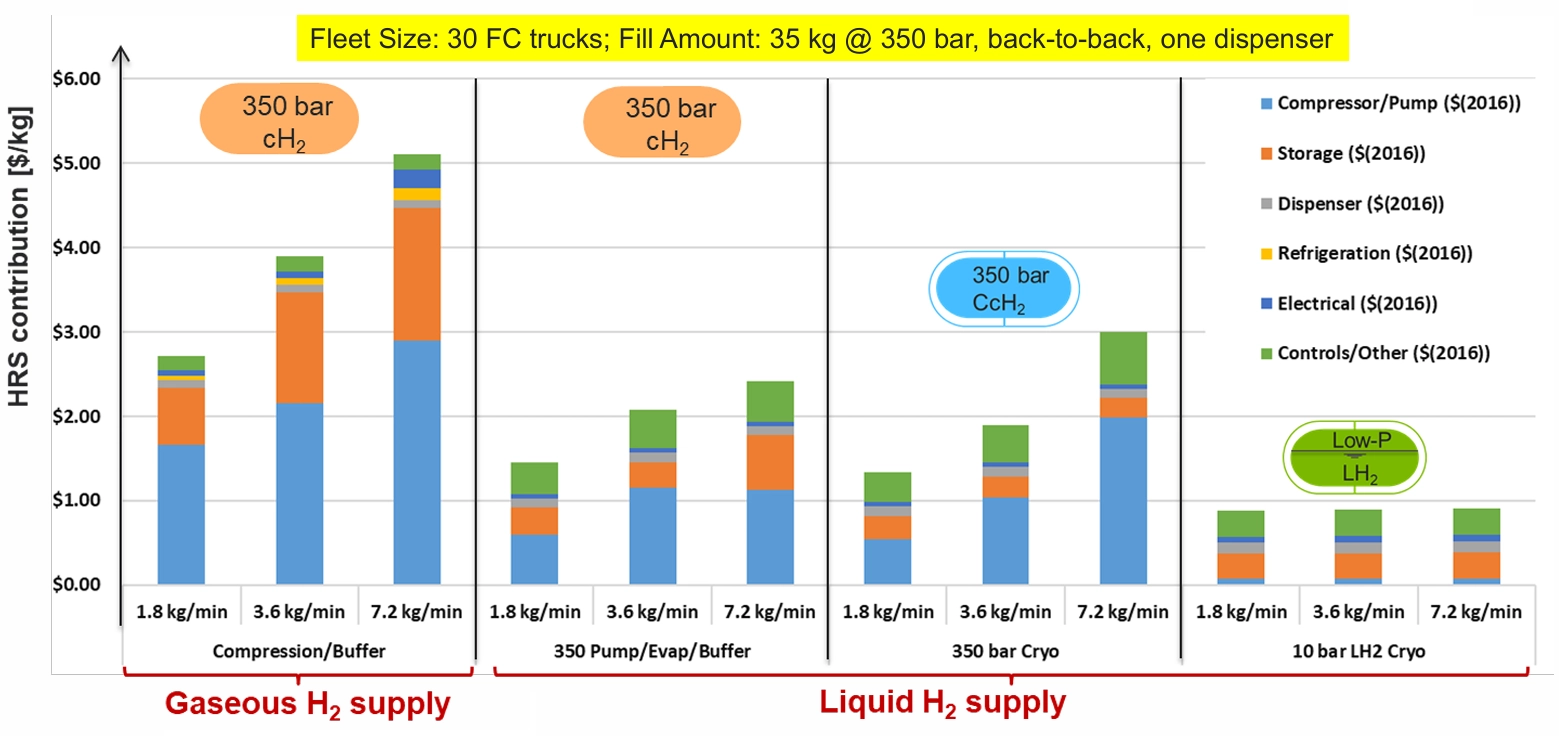
Compression and pumping are key cost drivers
700 bar tanks dramatically increase HRS cost, even with LH2supply
Class 8, long-haul trucks
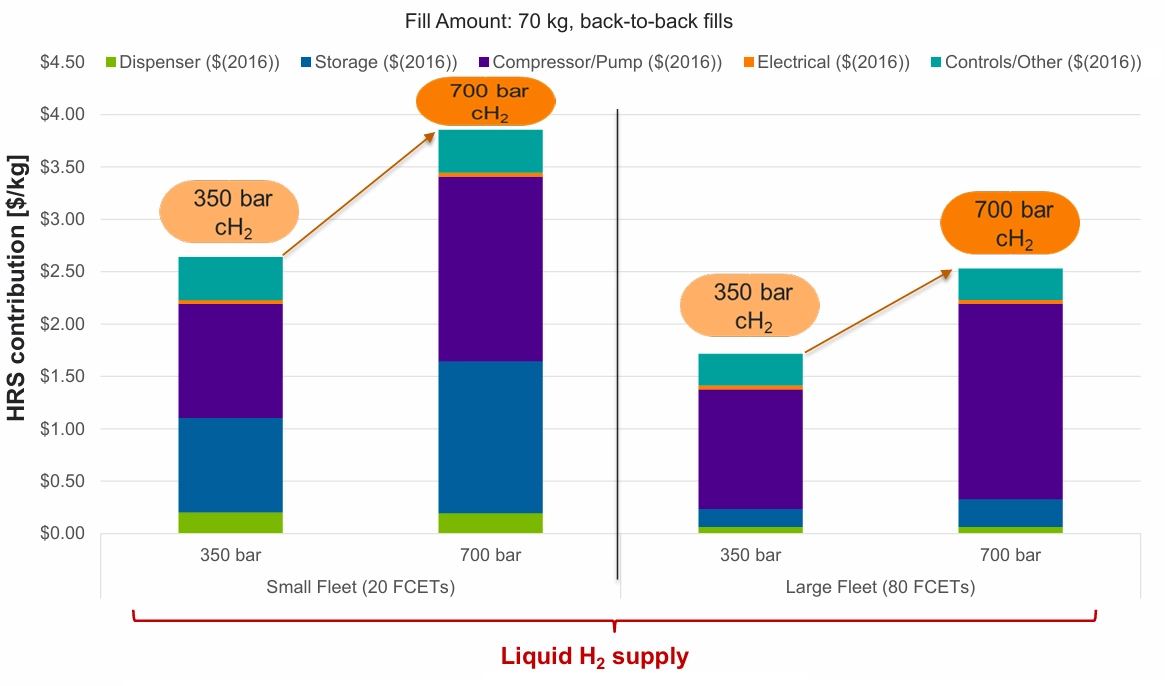
MDVs and buses can benefit from 350 bar fueling due to lower daily VMT and available space for CHSS
H2 liquefaction is energy and cost intensive
Scaling laws based on aggregation of industry input
• Liquefier CAPEX
• Specific energy consumption (SEC )
• Modeling and analysis in the literature suggest SEC can potentially be as low as 6 kWh/kg
• SLC– Specific liquefaction cost
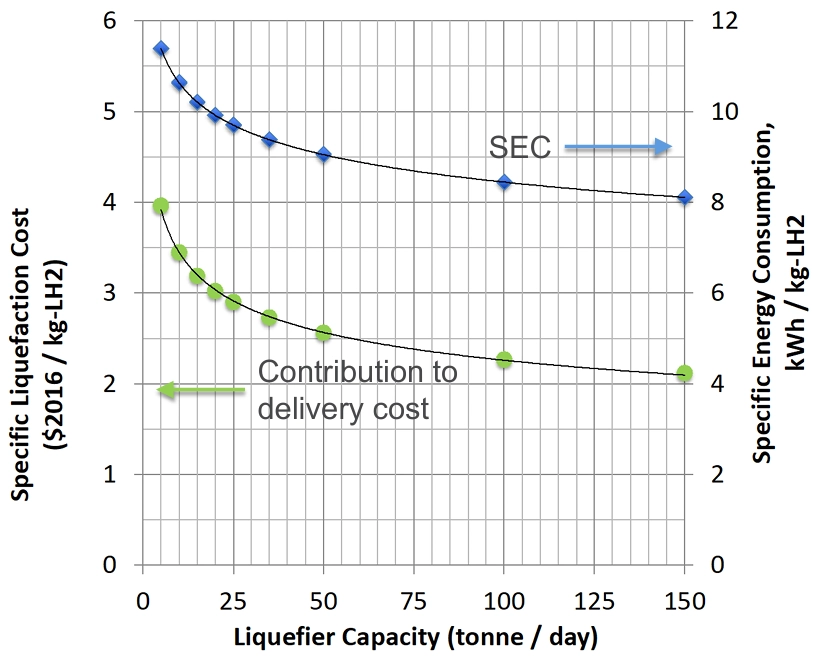

Cost associated with boiloff losses can be significant (depends on LH2 cost)
Example: sLH2 HRS
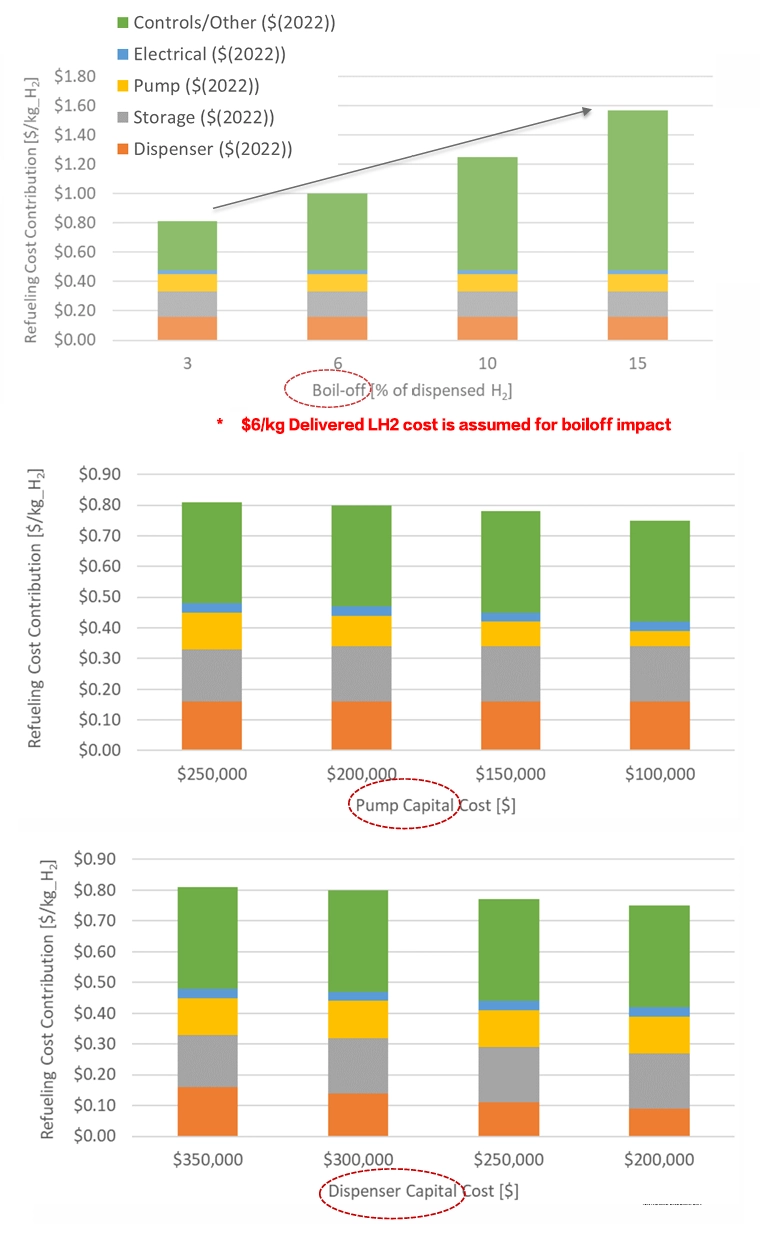
Conclusions
• Cost of hydrogen fueling depends strongly on H2 delivery phase (i.e., gaseous vs. liquid) and vehicle’s onboard storage design
• Cost and reliability of pump are key cost drivers
• CcH2 and sLH2 onboard storage can potentially reduce HRS cost contribution compared to 350 and 700 bar CH2 onboard storage
but energy density for CcH2 > sLH2 > 700 bar CH2 > 350 bar CH2
• Boiloff losses associated with cryogenic delivery to onboard storage is most impactful but most uncertain parameter
Requires careful assessment for CcH2 and sLH2 onboard storage fueling
• Liquefaction energy and carbon intensity are important considerations
Acknowledgment
Hydrogen fueling cost at Argonne have been supported by DOE’s Office of Energy Efficiency and Renewable Energy’s Hydrogen and Fuel Cell Technologies Office (HFTO) for over two decades
版权声明:本文为原创文章,版权归donstudio所有,欢迎分享本文,转载请保留出处!


